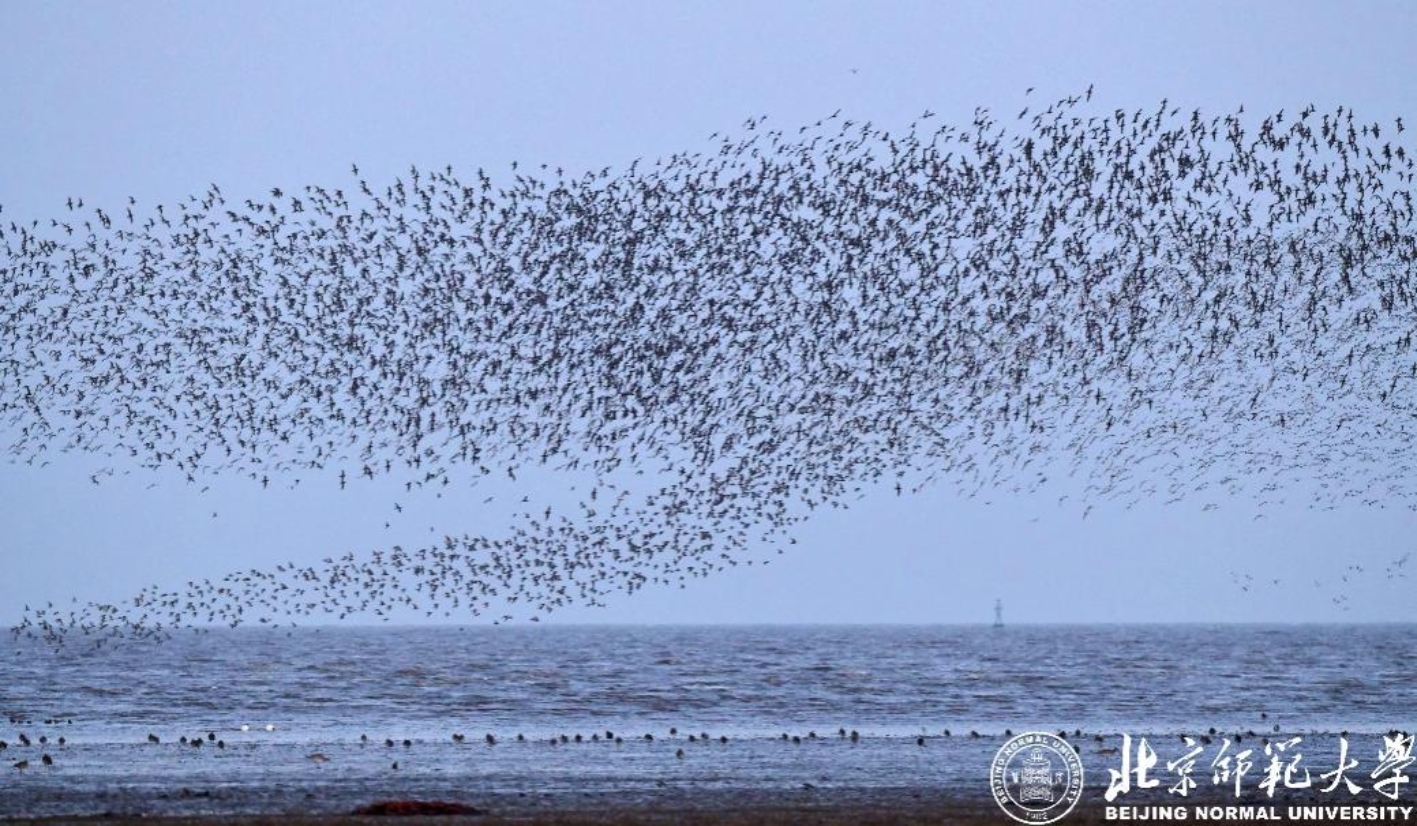BNU Prof. Zhang Zhengwang published paper on Journal of Animal Ecology, unravelling the processes between phenotypic plasticity and population dynamics in migratory birds
Migration is a resource-tracking strategy that birds evolve in seasonally changing environments, but the processes between phenotypic plasticity and population dynamics in migratory birds remain unclear. Bohai Bay is located on the East Asian Australasian Flyway (EAAF), supporting the survival and reproduction of tens of thousands of migratory waterbirds of over 200 types. A large number of waterbirds can be recorded in this migration every spring and autumn to stop over and replenish energy. With the help of the waterbird monitoring data collected for more than a decade, based on the analysis to the loss of staging habitat, BNU Prof. Zhang Zhengwang's team from the College of Life Sciences revealed for the first time the feedback link between bird migration strategies and population dynamics.

Figure 1 Migratory waterbird swarm in the Bohai Bay tidal flat wetland (Photo by Zheng Wenzhong)
By constructing an individual-based model containing programmed migratory populations, this study proposes for the first time a hypothesis on how changes in staging habitat lead to variations of individual stopover duration and population dynamic in migratory birds, and verifies this hypothesis by analyzing the survey data of migratory staging waterbirds in the Bohai Bay area of China. The study found that the loss of the staging habitat will lead to a change in the migration strategy of birds. Because the individual migratory birds have less access to food resources in the staging habitat, they will extend the residence time in the staging habitat to replenish energy, which triggers the increase in the population density of migratory birds during the migration stopovers which has a chain reaction on the population dynamics of the breeding stage and the wintering stage during the life history cycle. This is because the loss of stops during migration not only leads to a decline in the carrying capacity of the environment along the entire migration route, but also changes the stage of the migratory bird's life history that has a regulating effect on the population.

Figure 2 Migratory waterbirds and their habitats in Beidagang Wetland in Bohai Bay (Photographed by Nian Aijun)
The results show that the effect of environmental changes on a certain stage in the life history of migratory birds will have a huge impact on the population dynamics of the entire life history cycle through its phenotypic plasticity. Therefore, only by studying all stages of the life cycle of migratory birds can we deeply understand the population dynamics of migratory birds. Focusing on a particular habitat or a certain life cycle stage of a migratory bird, while ignoring other aspects of the information, can make it impossible to accurately predict the dynamics of migratory bird populations, and even lead to wrong conclusions, thus missing the best time to implement protective measures for migratory birds. Not only can the study explain migratory bird dynamics in the East Asia-Australasian migration zone, but the feedback mechanisms we have uncovered can also serve as a common theoretical framework for studying other taxa and migration systems.

Figure 3 The processes linking individual migration tactics and population dynamics (Figure from the article)
The research work, titled "Unravelling the processes between phenotypic plasticity and population dynamics in migratory birds," was published in the Journal of Animal Ecology, the flagship journal of international animal ecology. Liu Jin, a doctoral student at the College of Life Sciences of BNU, is the first author of the paper, and Prof. Zhang Zhengwang is the corresponding author. Other authors are Dr. Lei Weipan of BNU, Assc Prof. Mo Xunqiang of Tianjin Normal University, Prof. Tim Coulson of Oxford University, and Mr. Chris Hassell, a waterbird expert in Australia.
Link:https://besjournals.onlinelibrary.wiley.com/doi/10.1111/1365-2656.13686


